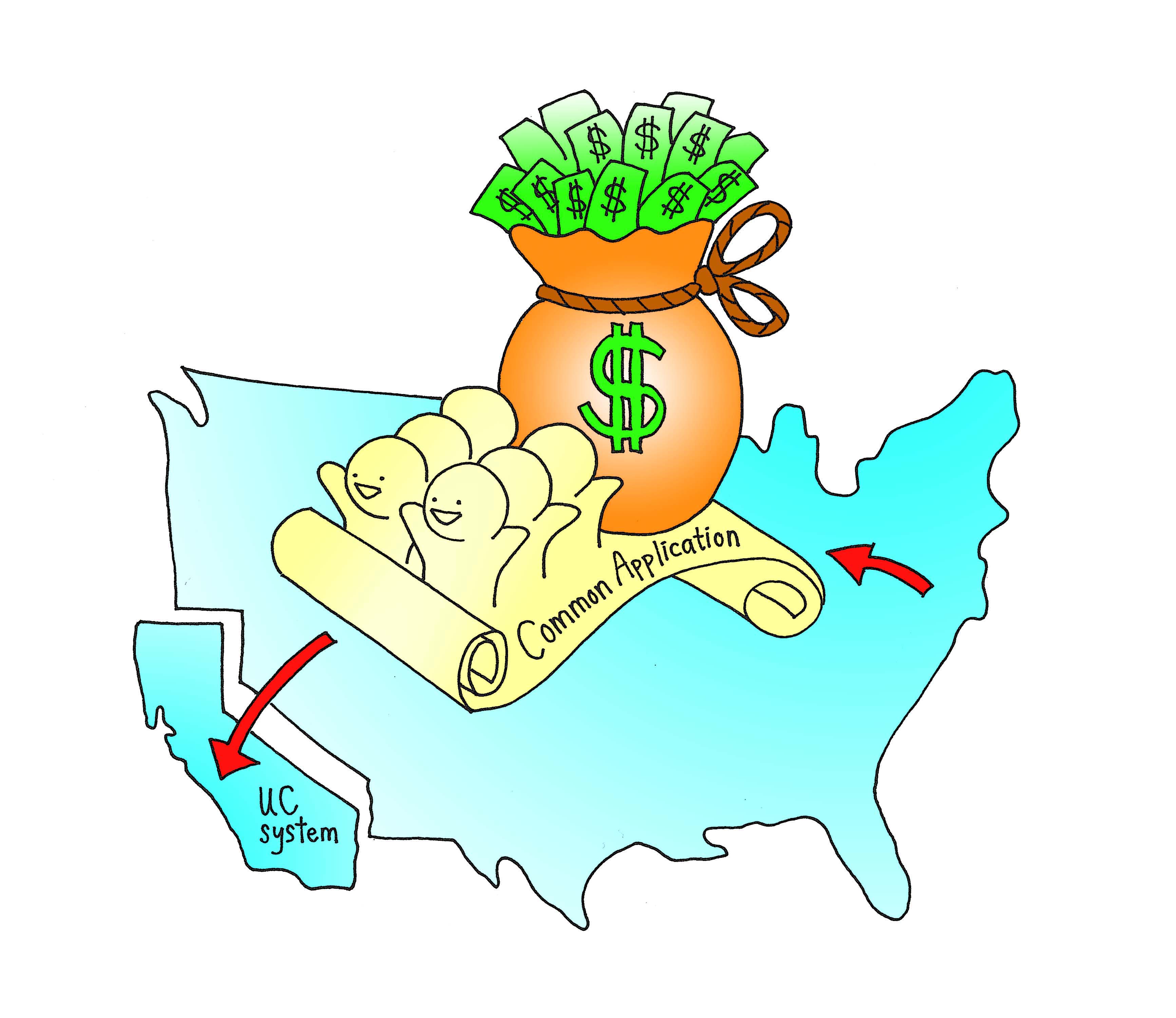Correction: The original version of this article contained an error. Claremont McKenna College is the one of the Claremont Colleges, all of which use the Common Application.
Out-of-state students are something of a novelty at UCLA. After telling people I’m from Texas, I usually get asked if I’ve ever been to a rodeo (yes), how I like my barbecue (smoked brisket with a lot of sauce) and if we really have highway signs that read “Don’t Mess With Texas” (yes, we do). It seems most people here have never met a Texan.
But this novelty that I enjoy may soon be coming to an end as increasing the number of out-of-state students on campus has become necessary for UCLA while it struggles with its budget. A simple search lets you know that out-of-state students pay some $22,000 per year more in tuition than in-state students. And if the University of California wants to reach more nonresident students, it should make applying to the university easier by accepting the national Common Application ““ something more than 400 other universities already do.
The importance of increasing nonresident students has been underlined by many. Last quarter, Chancellor Gene Block identified increasing nonresident students as one of his five areas to stabilize the campus budget. The UC Commission on the Future, a group that looks at the future of the UC budget, has also recommended increasing out-of-state students for the UC to stay vital.
Admissions counselors have already been working toward this goal, racking frequent flyer miles while visiting schools in 10 U.S. cities and four countries before the November application deadline.
While these efforts are fine and well, allowing students to apply using the national Common App would smooth over the process.
Of the more than 400 schools that accept the Common App, 26 are in California. While the application was formed by a collection of private schools and remains dominated by them, more than 50 public schools have since joined and more are on the way, according to Rob Killion, executive director of the Common Application.
Using the Common App would ease the lives of high school seniors who are forced to fill out the same information about classes, tests and extracurricular activities multiple times. My guess is that many UC candidates are likely also applying to schools that accept the national Common App.
If only some of the UC campuses want to join the Common App, we would not have to abandon the UC application. Campuses could concurrently accept applications from the national Common App and the UC-specific application. Two-thirds of the schools that accept the national Common App also have their own application as well.
UC campuses could choose to make applicants fill out a “supplement” to the Common App, if administrators decided they wanted information the application doesn’t already ask of students. A supplemental portion could include a checklist for A-G requirements, something unique to California public schools.
The Common App organization will even provide training for administrators on how to use the system, according to Chris Gruber, president and secretary of the Common Application.
One of the most recent schools to join was the University of Michigan, a school similar to UCLA in many ways. Both are large public research universities. Both are ranked in the top 30 schools by US News & World Report, the gold standard of college rankings. And both have been victims of declining state support.
The University of Michigan switched to the Common App this past summer to make it easier for applicants by reducing the burden of filling out the University of Michigan application in addition to the Common App. They found that most applicants to the school are already filling out the Common App, which includes all but five schools ranked in the top 25.
Still, the UC would have to make one change to the application. Currently, the UC application does not ask for or accept a letter of recommendation. According to Gruber, members of the Common App must require a letter of recommendation as part of the application process. But this doesn’t seem like it would be difficult to manage since the Common App allows for electronic submissions of letters.
The Common App does charge a low membership fee and $6.50 per application to universities, but I imagine the extra dollars would be more than made up for by students’ out-of-state tuition.
Ultimately, using the Common App will help the process of integrating geographic diversity and help the UC financially and culturally. But more out-of-state students means it might be harder for me to make small talk when I meet people in class.
Hated the Common App? E-mail Ramzanali at aramzanali@media.ucla.edu. Send general comments to opinion@media.ucla.edu.
